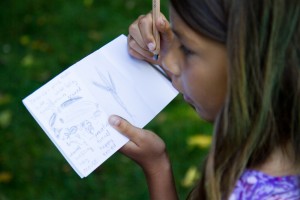You can teach
You can teach kids how to drawing and painting. Don’t worry if you’re not an expert—I promise you can do it! Lately, I’ve been getting lots of emails from parents and teachers who are unsure about teaching art without being great at drawing or painting realistic pictures. I’m excited to help answer this question! So, lets get started understanding – Teach Drawing & Painting Without Knowing How-to Draw.
Even though I’m really good at drawing and painting. And and using computers to make art. I don’t often get to show these skills. Why? Because, children are usually not ready for these types lessons. I usually teach these advance lessons to high school or adults.
The 3 Reason Why
The main reason is that kids are not quite ready yet for this type of teaching. To do well in drawing and painting, kids need to show maturity in three important areas. Drawing from what I know, I’ve figured out how kids learn to draw and paint. These three key areas of growth connect, change, and get better as time goes on.
- Visual Perception: This means how well your eyes can see and understand what you’re looking at.
- Cognitive Processing: This is about how your brain remembers and thinks about what you see and touch.
- Fine Motor Abilities: This is the skill to create things with care using your hands.
I’ve found that these three parts are important for becoming good at art. As kids grow up, these areas improve, making art skills much easier to learn.

It’s commonly believed that kids should learn about famous artists and art basics like design rules. What they really need are easy art lessons they can understand. Kids need chances to practice simple drawing and painting. As a grown-up, you have lots of experience and know-how to teach the basics of art. Here are some simple art ideas to help you begin teaching kids about drawing and painting.

Teaching Tips
- Be able to draw basic geometric shapes accurately
- Have the ability to paint a basic shape using a paintbrush
- Know how to purchase art supplies and materials
- Read and follow arts and craft instructions effectively
- Provide guidance to your students or child
- Manage and schedule art lessons
- Keep track of completed lessons
- Demonstrate each step clearly
- Display a willingness to explore and learn alongside your students
- Encourage your students to take the next step and challenge themselves
- Set specific deadlines to complete projects
- Understand and empathize with your students’ emotions
- Recognize that children are not expected to copy images exactly
I genuinely believe that children under the age of 12 aren’t receiving adequate foundational art education to support their progression toward realism.
Below, you’ll find foundational drawing ideas they should focus on.
- Learn how to make sketch marks and erase effectively
- Learn how to doodle using different mediums
- Learn how to draw different types of lines accurately
- Learn how to combine lines to create textures
- Learn how to create patterns using lines
- Learn how to color your line drawings using various mediums
- Learn how to draw geometric shapes correctly
- Learn how to draw simple organic shapes
- Learn how to draw symmetrical figures
- Learn how to draw asymmetrical figures
- Learn how to maintain balanced proportions
- Understand the concept of positive and negative space
- Learn how to create different values using various mediums
- Learn how to draw the horizon line accurately
- Learn how to create a vanishing point
- Learn how to make 3D letters
- Learn how to create a one-point perspective drawing
Color Mixing Skills
1. Master primary color mixing to create secondary colors.
2. Explore creative techniques using cool colors.
3. Explore creative techniques using warm colors.
4. Develop proficiency in mixing shades.
5. Develop proficiency in mixing tones.
6. Develop proficiency in mixing tints.
7. Learn the art of mixing various values within a single color.
Painting Skills:
1. Master various line brush mark techniques.
2. Explore painting organic shapes.
3. Develop skills in creating textures using a paintbrush.
4. Learn the art of blending two colors seamlessly.
5. Dive into painting geometric shapes.
6. Experiment with line, dots, and dashes in your artwork.
7. Discover the world of crafting through painting.
8. Explore the art of painting on different surfaces.
9. Acquire proficiency in using watercolor paint.
10. Master the application of tempera paint.
11. Explore the versatility of acrylic paint.
12. Gain insight into simple techniques employed by renowned artists.
13. Learn the art of mono printing.
Teach Drawing & Painting Without Knowing How-To!
Again if you would like to learn more about this science art method you can order my Books by Clicking Here.
Warmly,
Spramani

All rights reserved © 2025, Nature of Art®

No part of this blog may be used or be reproduced in any manner whatsoever including reproducing, publishing, performing, and making any adaptions of the work – including translation into another foreign language without written permission except in the case of brief quotations embodied in critical articles and reviews. Nature of Art® Publishing P.O. Box 443 Solana Beach, California 92075.








Recent Comments
[…] Teach Drawing & Painting Without Knowing How To! […]
Comments are closed.